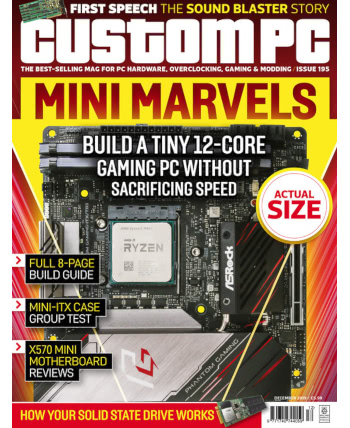
First, the shaders. Few would argue that the move away from bulky and power-hungry cathode-ray tube displays to modern liquid-crystal displays was a bad thing, except for possibly vintage game enthusiasts. The “pixel art” of old, you see, was never meant to show big, blocky, individual pixels: the CRT would smooth and blend things as a by-product of its relative inaccuracy, meaning when you fire up a classic like Doom or Moraff’s World and feel disappointed in its appearance it’s not entirely down to rose-tinted spectacles.
Shaders, typically but not exclusively written in GL Shader Language, can help. In the opening piece for this month’s column, I look at how these handy add-ons can turn the block output of an emulator into a surprisingly convincing simulation of a CRT – complete with curvature and overscan, if that’s your wont. The difference in appearance is little short of astounding – though it may take some customisation before you’re fully satisfied with the results.
The Argon One M.2, meanwhile, looks externally a lot like the previous entries in the Argon One case family. There’s the same metal shell, which doubles as a heatsink and means the built-in temperature-controlled fan rarely activates, the same magnetic cover hiding a colour-coded and silkscreened general-purpose input/output (GPIO) header, and the same layout which puts all the Raspberry Pi’s various ports to the rear for neater cabling.
Where the new design differs is in a larger base, which hides the circuitry for converting an M.2 SATA SSD into a USB-attached storage device. Unlike the NESPi 4, reviewed back in Issue 210, this one works properly in USB Attached SCSI (UAS) mode, giving a throughput of 387/300MBps read/write on a test SSD rated at 500/320MBps.
Finally, Big Data Girl is a bit of a departure for the column, as it’s a children’s book – but one with a difference: Wordie’s crowdfunded title aims to introduce the concept of “big data,” anthropomorphised as a friendly little girl, highlighting both how useful it can be and how it can impact your privacy. It’s a smart idea, and Taberna’s illustrations are fantastic, but serves more as a conversation starter for parents already familiar with the concepts than a stand-alone guide to the subject.
Custom PC Issue 213 is available now at all good supermarkets, newsagents, digital distribution platforms, and from the official website with international delivery.




 This month’s Hobby Tech column is taken up with a trio of reviews covering the pretty darn impressive
This month’s Hobby Tech column is taken up with a trio of reviews covering the pretty darn impressive